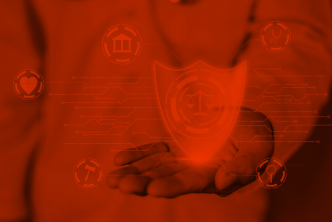From License Application to Launch: 6 Tips for Full Pharmacovigilance System Development
Syneos Health experts provide invaluable advice for any company preparing for an asset launch to consider for the implementation of compliant pharmacovigilance system.
For asset development teams considering a first product launch in the United States, the European Union (EU) or any other region, preparing a business to meet requirements for a license holder can be a complex task.
There is approximately one year between license application submission and license approval plus additional time after that to release asset to the market, so essentially this is a critical time for finalizing and implementing your pharmacovigilance (PV) system.
As the legal environment shifts from peri- to post-approval and then towards post-marketing, regulatory expectations on the license holder must be met regardless of a country or region.
In this final blog in this series, our experts will discuss six tips for asset development teams to keep in mind as they approach license approval and product launch in their product development journey.
- Refine PV governance. Confirm who at your organization will be responsible for the asset’s safety profile and your PV system’s compliance and performance. Adjustments, as opposed to the initial plan, may be considered based on the evolution of the company’s structure and recent or planned partnership. Validate how decision making will be held for any issue that might occur, especially for serious safety issues which might trigger a PV crisis. This includes the ability to conduct and demonstrate efficient oversight on the safety profile and PV system. Teams should define essential elements in the procedural document, such as PV Governance and associated charters.
- Determine your PV Operating Model. Having an efficient and lean PV operations with seamless workflows, supporting tools and clear procedural descriptions will take an effort to develop, especially when decision is to be made on how to operationalize, via internal or external resources or combination. If various types of partners and vendors, such as distributors, are used; hence agreement on which procedures will be utilized, associated due diligence, pre-qualification audit and systematic vendor management are key to the overall success.
- Partner with other teams in your organization. Look for cross-functional dependencies and efficiencies ensuring right interfaces and collaboration globally, regionally and locally, such as with Clinical, Commercial, Legal, Medical, Quality Assurance or Regulatory. Partnering internally to mutualize resources is also common for optimizing resources, especially at local level. At the beginning of the launch journey, as commercial plans are kicked off especially milestones such as date of asset’s launch, establishing new partnerships are tightly connected to other teams planning. Raising awareness about PV, such what information you need from your peers, and when and why you need it, can mitigate compliance issues.
- Understand sources of your PV data. The variety of data sources increases dramatically after commercialization. Consider that any activity initiated by your marketing team such as market research and patient support programs, social media and company sponsored websites, legal cases due do AE, or any data received by your quality on technical issues or by sales representatives, will need to be provided to your PV department for processing and therefore will require a mechanism for collection and evaluation of the safety data. Recognizing the PV aspect of any partnership at an early stage will always be beneficial.
- Assess your systems and technology. Suitability of deployed information technology (IT) might change over time. The volume and variety of the data and documents can change significantly together with increasing number of resources, collaborators, and their types. Examine if your current IT capabilities suffice your future needs, particularly scrutinizing where and how PV data and documents are stored and protected and how access control is managed, along with adequacy of safety database. Appropriate learning management system can address growing complexity of trainings within your organization.
- Duly arrange implementation of Risk Management Commitments. Besides implementing standard routine PV activities, such as case processing, signal management and periodic reporting, extra time is needed for authority review and approval of any materials, programs or non-interventional studies. Once approved, these must be implemented locally prior to asset release to the market.
Extra task to consider when approaching License Approval outside US
Some countries require a nomination of a Local PV Person, such as a Local Contact Person for PV or Local Qualified Person for PV, where the actual title and responsibilities might significantly differ from country to country. Moreover, requirements on personnel location and education might represent an additional layer of complexity. There are multiple possible efficiencies to apply in operating models, including leveraging cross-functional capabilities at local level, however following items should be always considered:
- Language(s) spoken in given country
- Requirements on personnel location, availability, education and background
- Direct contact with Local Regulatory Authority
- Tasks performed at local vs regional vs global level
If you are in any doubt and need support to double check if you have taken the right steps and direction, seek independent advice and get your PV System assessed for your asset launch’s readiness via a PV Gap Analysis. When doing so, make sure you have sufficient time to address any significant gaps and agree on clear prioritization.
Syneos Health has made patient safety a critical component in the acceleration of biopharmaceutical therapies. If you want to understand how we work to support companies to keep patients safe throughout the lifecycle of a product with both standalone and integrated services, get in touch with our safety and pharmacovigilance teams.
Contributors
Miroslava Matikova
EU Qualified Person for Pharmacovigilance, Syneos Health
[email protected]
Fanny Provost
Principal Qualified Person for Pharmacovigilance Office Specialist, Syneos Health
[email protected]
Nicolas Martin
Director Safety & Pharmacovigilance, Syneos Health
[email protected]
Zeshan Iqbal
Director Safety & Pharmacovigilance, Syneos Health
[email protected]







